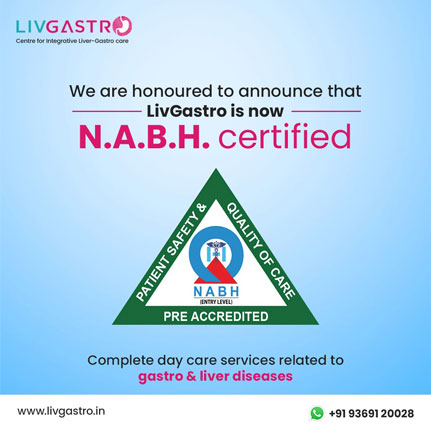
Team LivGastro provides utility based model of care that integrates specialists, primary care , laboratory, imaging and other health services to give patients a convenient and superior outcome along with a pleasant experience. Since we primarily focus on outdoor-patient care, on the site instant testing along with detailed and accurate results, we enable our patients and their families save
a lot of effort, time and money.
When a person becomes unable to eat or drink anything by mouth (terminal cases), a feeding tube is inserted directly into the stomach through the abdominal skin. The tube helps to enrich the person with nutrients by way of feeding directly into the gastrointestinal tract, bypassing the mouth or the esophagus. Even though the procedure seldom helps in continuing a person’s life apparently at the fag end of it, the practice works on the principle of ‘Trying your best towards saving a soul’.
Be that as it may, the surgery involved in placing a PEG tube is quite simple, though the circumstances under which it is performed is rather complex. To begin with, the person is made to wear a hospital gown, while eyeglasses; dentures (if any) are removed from his/her person. This will be followed by pushing antibiotics (IV) and some sedatives to relieve consequential discomfort.
The attending physician will then insert an endoscope through the mouth of the patient right into the stomach. The camera (with light source) fitted on to the endoscope will send picture of the patient’s stomach lining which will help the physician to determine the appropriate site for placing the PEG tube.
However, a small incision needs to be made in the abdominal wall to insert the PEG tube which will be secured with the abdomen with a tape.
Well; for the next 48 hours (or two consecutive days) there will be drainage around the PEG tube, while a sterile gauge dressing will take care of it. However, once the wound has healed and the dressing has been removed, the area may be washed clean everyday with soap and warm water, while nutrients may be sent across the PEG tube directly into the stomach. The whole procedure does not take more than 30 to 45 minutes at the maximum.
Warning: The physician or the attendants must keep close watch on the patient/person to see if any infection has occurred and should take immediate steps to tackle it right away.
